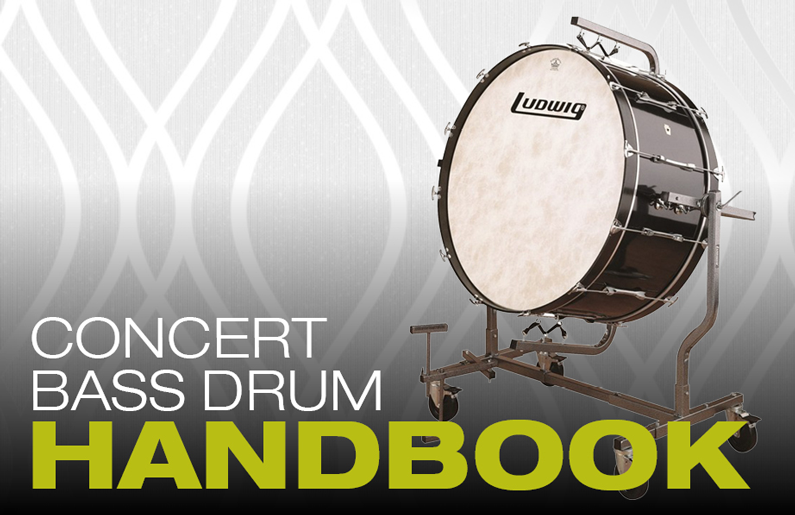Here is an overview of things to know about concert bass drums. Whether you are purchasing a new drum, working on an old one, or performing, these are helpful things for all percussionists to know.
Depth
The depth of any drum will affect the tone, projection, and volume. A deeper shell will resonate more than a shallower drum. And because of the larger size, you will have more volume and projection capabilities.
Concert bass drum depths range from 14” to 22” and are paired up with their respective diameters. A general depth for a 36” diameter drum would be 16” or 18” in depth.
Something to keep in mind for educators is the size of your students. Larger drums might be hard for them to play and dampen properly. How large is your ensemble? Getting a large drum might seem like a good idea, but if you have a small band, the drum could be overpowering and not fit well within the group.
Diameter
The size of the diameter will determine your pitch range. The smaller diameter drums will have a higher pitch than the larger diameter drums. Tuning is also a factor when determining pitch, but when looking for a solid fundamental tone, the size of the drum will set the limits of what you can do.
Concert bass drums are typically offered from 28” up to 40” in diameter. A good general size for most ensembles would be a 36” drum. This size is great for high schools all the way up to professional ensembles. This size works well on the concert stage or out on the football field. Smaller size diameters are great for smaller ensembles, elementary/middle school bands, multiple percussion setups, marches, or when the music requires a smaller sound.
Shell Type
The most popular bass drum shells are Mahogany. Mahogany is known for its warmth and softness which brings out the best low tones of the drum. Kapur is used as well. This is another type of wood that is used on entry-level drums. It is a great substitute because it shares many of the similar characteristics that Mahogany offers.
Maple shell bass drums are also available. Maple shells will have a more even volume balance across more frequencies than Mahogany and projects well.
Head Choice
Again, there are many different views out there. A common way to determine the head choice is based on drum head selection. If there is a thicker head on the batter side and a thinner head on the resonant side, for example, a recommendation is to use a Remo Renaissance Emperor on the batter, with a Remo Renaissance Ambassador on the resonant. This set up produces the best tone and lets the drum sing.
Percussion Source offers Calf Skin bass drum heads. These heads are made to order and can take at least 90-180 days to ship depending on materials on hand. We do not keep these in stock as we would not want these heads sitting for a long time before shipping. If you have any questions regarding these, please let us know.
Tuning
There are many different views on tuning concert bass drums. The following tuning method closely resembles former Chicago Symphony percussionist, Al Payson, suggestion.
Batter Head
After installing a new head or clearing an existing head, tune the batter head until it produces the lowest pure tone. The head should not be rattling and should have a low presence. Leave the head at this tone.
Resonant Head
I have found that tuning the resonant head higher gives the drum its fullest sound. I would tune the resonant head to a Major 2nd higher than the batter head. Start here and see if you are getting the sound you desire. Experiment a little and find your drums sweet spot.
There are many different views on tuning out there. This is not written in stone. Please feel free to share your techniques below

Percussion Source is your full-service resource for the finest concert percussion instruments and accessories. Everyone at Percussion Source is an active percussionist. When you call, you’ll talk with fellow percussionists to get advice from a player’s perspective. Your musical success is the focus of our work. We welcome your comments and thoughts about how we can help serve you better.




